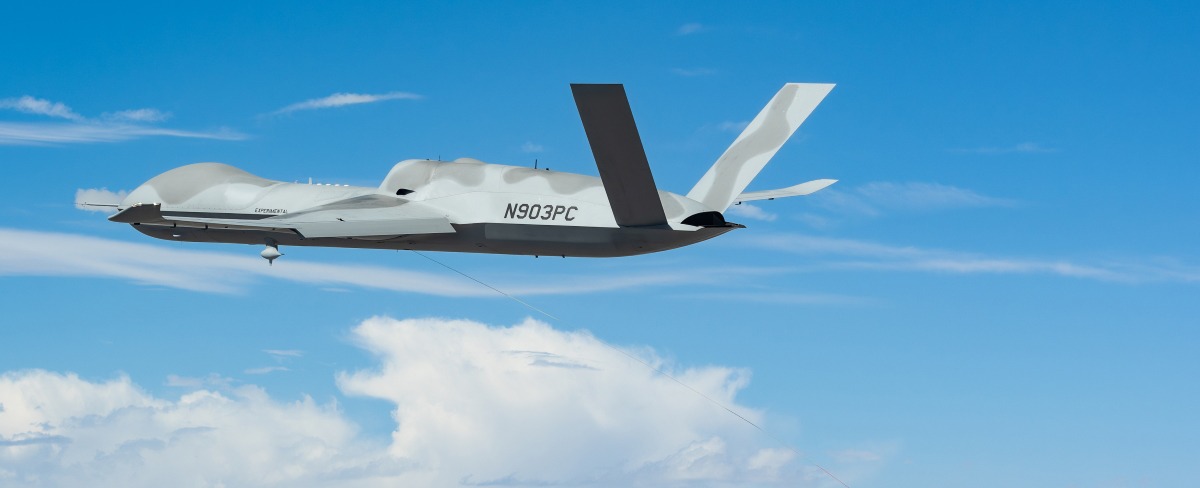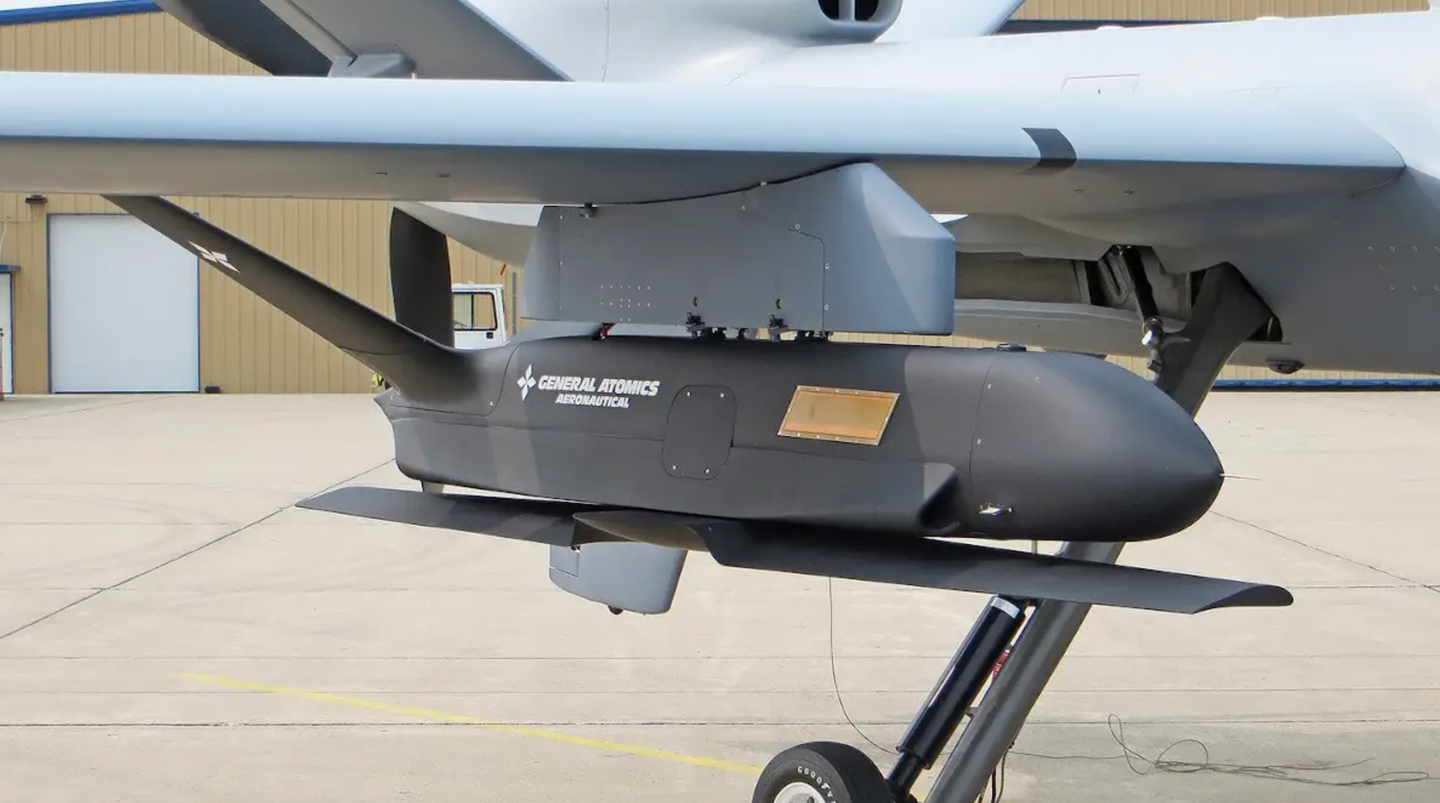General Atomics Aeronautical Systems (GA-ASI) has announced the successful demonstration of its Aerial Recovery System, engineered explicitly for mid-air launch and retrieval of small drones.
In a press release on October 10, GA-ASI announced that it has initiated flight demonstrations of its Aerial Recovery System using the MQ-20 Avenger.
The system was demonstrated on September 20, 2023, above Dugway Proving Ground in Utah. During the demonstration, a towline was extended and retracted from an Extended Range version of a MQ-20 Avenger.
This system will enable the mid-air launch and retrieval of small drones from larger UAVs, forming a pivotal aspect of the company’s comprehensive vision for the potential applications of such aircraft in future conflicts.
GA-ASI refers to this concept as the Aerial Recovery System for Small Unmanned Aircraft Systems/Air-Launched Effects (SUAS/ALE).
The towline was equipped with a feature referred to by the company as a “smart end feature,” incorporating a wireless connection to communicate with the larger UAV.
The company explained that during the demonstration, they incorporated a hoist from Breeze-Eastern, enhanced with GA-ASI’s cutting-edge smart end feature, into the payload bay of the Avenger aircraft. While the Avenger was in flight, the towline was extended to the ideal distance for mid-air recovery.

The smart end feature demonstrated its capability to transmit its position wirelessly back to the Avenger, confirming its data transmission abilities for retrieving nearby Small Unmanned Aircraft Systems/Air-Launched Effects (SUAS/ALE).
“Integrating air-launched UAS from Group 5 unmanned aircraft is possible, in part, thanks to advances in relative navigation technology, complex towline analysis, and multi-aircraft control being pioneered by GA-ASI,” said Mike Atwood, Vice President of Advanced Programs at GA-ASI.
“We are excited to see this technology enable long-range kill chains from today’s manned and unmanned systems supporting operations in highly contested environments.”
BREAKING: GA-ASI #AvengerUAS tests new aerial recovery system for small unmanned aircraft.
This recovery system will enable our large unmanned aircraft to recover and redeploy smaller ones, like Sparrowhawk, midflight.
Read here: https://t.co/Khf0B0aqFJ pic.twitter.com/yJA4dKMtdc
— GA-ASI (@GenAtomics_ASI) October 10, 2023
The press release by GA-ASI does not offer explicit information regarding the Small Unmanned Aircraft Systems/Air-Launched Effects (SUAS/ALE) drone or drones slated for eventual deployment.
However, in a tweet, the company highlighted that this recovery system will facilitate smaller drones’ in-flight retrieval and relaunch, explicitly mentioning the Sparrowhawk among the candidates for such operations.
The Sparrowhawk, custom-built for mid-air launch and retrieval missions, offers a versatile multi-mission capacity encompassing intelligence, surveillance, reconnaissance (ISR), signals intelligence (SIGINT), electronic intelligence (ELINT), and jamming capabilities, all housed within an agile and high-speed airframe.
Its capacity to operate stealthily and swiftly makes it well-suited for deployment in contested environments.
Aerial Recovery System Overview
This innovative aerial recovery concept employs a towline and a smart end feature, both as a beacon and a mechanical interface for mid-air recovery.
The Small Unmanned Aircraft Systems/Air-Launched Effects (SUAS/ALE) calculate its precise position to the smart end feature to guide it toward the intercept point on the towline, followed by a controlled maneuver to secure the end feature.
Once securely attached to the towline, the SUAS/ALE retracts its wings and shuts down its engine, transitioning into a passively stable towed configuration. According to General Atomics, a hoist pod on the parent aircraft then reels in the SUAS/ALE to a captive carriage state, enabling both platforms to return to base together.
Moreover, the company explained that the Small Unmanned Aircraft Systems/Air-Launched Effects (SUAS/ALE) capabilities go beyond mere captive carry back to base.
It can undergo refueling, recharging, and rearming and subsequently be redeployed. Redeployment is not limited to ground operations but can occur directly from the host aircraft, allowing SUAS/ALEs to establish their orbits from mid-air launch and recovery positions.

This aerial redeployment capability will transform Unmanned Aerial Systems (UAS) like GA-ASI’s Avenger or MQ-9A Reaper into mobile command centers, creating a vast network of SUAS/ALEs in an enduring and expansive grid.
This grid can serve various roles, including surveillance, electronic attack, enemy air defense suppression, communication support, and facilitating joint all-domain mobile command and control for extended durations.
In addition, even though the Avenger or Reaper drones conducting the launch and recovery of SUAS/ALEs might have restricted endurance, the smaller drones hold the potential to maintain extended station-keeping capabilities, potentially staying operational for “days or weeks at a time.”
Other host aircraft could receive these smaller drones as they enter the area, ensuring an uninterrupted supply of fuel, battery power, and, if practicable, weaponry as needed. This approach enables a continuous mission presence in the area.
- Contact the author at ashishmichel(at)gmail.com
- Follow EurAsian Times on Google News




